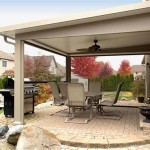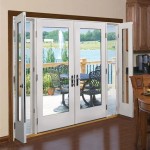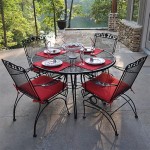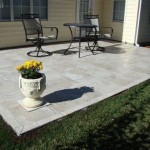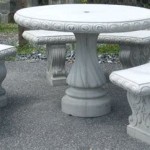Making The Most Of Your Patio Fire Pit: Propane Gas
A patio fire pit fueled by propane gas offers a convenient and aesthetically pleasing addition to outdoor living spaces. Unlike wood-burning fire pits, propane models eliminate the challenges of sourcing and storing firewood, producing smoke, and dealing with ashes. They provide instant ignition, adjustable flame height, and consistent heat output, making them a popular choice for creating a warm and inviting ambiance for relaxation and entertainment.
Maximizing the benefits of a propane fire pit involves several considerations, encompassing safety, maintenance, fuel management, and enhancing the overall user experience. Understanding these aspects ensures safe operation, prolongs the lifespan of the fire pit, and optimizes enjoyment throughout the seasons.
Safety First: Essential Precautions for Propane Fire Pits
Safety constitutes the paramount concern when operating any propane-fueled appliance, including patio fire pits. Adhering to safety guidelines minimizes the risk of accidents and ensures the well-being of users and their surroundings.
Proper ventilation serves as a critical safety measure. Propane fire pits should always be operated outdoors, in well-ventilated areas. Avoid using them in enclosed spaces such as screened-in porches or covered patios with limited airflow, as this can lead to carbon monoxide buildup, a potentially lethal hazard. Even seemingly open areas can trap exhaust gases if ventilation is poor. Prior to each use, assess the wind conditions. Strong winds can cause flames to flare unpredictably, posing a burn risk. Consider repositioning the fire pit or using a wind guard to mitigate the effects of adverse weather.
Maintaining a safe distance from flammable materials is also crucial. Keep the fire pit at least ten feet away from any combustible objects, including furniture, plants, trees, fences, and overhead structures such as awnings or pergolas. Ensure that children and pets are supervised at all times while the fire pit is in operation. Establish a "no play zone" around the fire pit to prevent accidental contact with the hot surface or flames. Consider using a protective screen or guard to further prevent accidental contact and contain sparks.
Regularly inspect the propane tank and connections for leaks or damage. Before connecting the tank, visually examine the tank for any signs of rust, dents, or other damage. Check the hose and regulator for cracks, kinks, or abrasions. If any damage is detected, do not use the fire pit and replace the damaged components immediately. Use a soapy water solution to check for leaks by applying it to the connections between the tank, hose, and regulator. If bubbles form, there is a leak. Tighten the connections or replace the faulty parts.
Familiarize oneself with the fire pit's operating instructions and safety warnings. Read the manufacturer's manual thoroughly before using the fire pit for the first time. Understand the ignition procedure, flame adjustment controls, and emergency shut-off procedures. Keep the manual readily accessible for future reference. Keep a fire extinguisher nearby, preferably one rated for Class B fires (flammable liquids and gases). Ensure that everyone who uses the fire pit knows how to operate the extinguisher in case of an emergency.
Optimizing Performance and Longevity Through Maintenance
Regular maintenance extends the lifespan of a propane fire pit and ensures optimal performance. Neglecting maintenance can lead to malfunctions, reduced efficiency, and potential safety hazards.
Cleaning the fire pit regularly is essential. After each use, allow the fire pit to cool completely before cleaning. Remove any debris, such as leaves, dirt, or insects, from the burner area and the surrounding surface. Use a soft brush or cloth to wipe down the exterior of the fire pit. For stubborn stains, use a mild soap and water solution. Avoid using harsh chemicals or abrasive cleaners, as they can damage the finish. Periodically inspect the burner for clogs or obstructions. Use a wire brush or compressed air to clear any blockages. Clogged burners can result in uneven flames, reduced heat output, and potential safety hazards.
Protecting the fire pit from the elements will prevent rust and corrosion. When the fire pit is not in use, cover it with a waterproof cover to protect it from rain, snow, and sun. Store the propane tank in a well-ventilated area away from direct sunlight and heat sources. If the fire pit is stored outdoors during the winter months, disconnect the propane tank and store it separately. Remove any lava rocks or decorative glass from the fire pit before storing it to prevent moisture buildup. Consider applying a rust-inhibiting coating to the metal components of the fire pit to provide additional protection.
Inspecting and maintaining the propane tank and connections is vital. Regularly check the propane tank for leaks or damage. Keep the tank clean and free of debris. Replace the tank if it shows signs of rust, dents, or other damage. Inspect the hose and regulator for cracks, kinks, or abrasions. Replace these components if any damage is detected. Ensure that the connections between the tank, hose, and regulator are tight and secure. Periodically check the connections for leaks using a soapy water solution.
Proper storage of the propane tank is crucial for safety. Always store propane tanks upright in a well-ventilated area, away from direct sunlight, heat sources, and potential ignition sources. Never store propane tanks indoors, in basements, or in garages. When transporting propane tanks, secure them properly to prevent them from tipping over or rolling around. Be aware that local regulations may govern propane tank storage, and it is essential to comply with these rules.
Enhancing the Ambiance and User Experience
Beyond safety and maintenance, several strategies can enhance the ambiance and overall user experience when operating a propane fire pit. These include selecting appropriate accessories, optimizing fuel consumption, and creating a comfortable and inviting outdoor space.
Adding decorative elements can enhance the aesthetic appeal of the fire pit. Lava rocks or fire glass add a visually appealing touch and help to distribute heat evenly. Choose lava rocks or fire glass that are specifically designed for use in fire pits. Avoid using rocks or glass from other sources, as they may contain moisture that can cause them to explode when heated. Consider using different colors or sizes of lava rocks or fire glass to create a unique and personalized look. Ensure that the decorative elements are evenly distributed around the burner to prevent uneven flames. A fire pit table provides a convenient surface for placing drinks and snacks, enhancing the comfort and functionality of the outdoor space.
Optimizing fuel consumption helps to extend the lifespan of a propane tank. Adjust the flame height to the desired level. Lower flames consume less propane than higher flames. Use a wind guard to protect the flames from wind, which can cause the fire pit to burn more fuel. Turn off the fire pit when it is not in use. Avoid leaving the fire pit running unattended for extended periods. Consider using a propane tank gauge to monitor the fuel level in the tank. This will help to avoid running out of propane unexpectedly. When purchasing propane, compare prices from different suppliers to find the best deal.
Creating a comfortable and inviting outdoor space enhances the overall experience. Arrange outdoor seating around the fire pit to create a cozy gathering space. Consider adding comfortable cushions and blankets to the seating area. String lights or lanterns can add ambiance and provide additional lighting. Plant flowers or shrubs around the patio to create a more natural and appealing environment. Adding a patio umbrella or awning can provide shade and protection from the elements. Play music or stream audio content to create a relaxing and enjoyable atmosphere.
Adapting the fire pit use to seasonal changes is also recommended. During cooler months, use the fire pit to provide warmth and create a cozy outdoor space. Consider adding blankets and throws to the seating area to provide additional warmth. Serve hot beverages, such as coffee, tea, or hot chocolate, to enhance the experience. During warmer months, use the fire pit to create ambiance and provide a focal point for outdoor gatherings. Use citronella candles or torches to repel mosquitoes and other insects. Serve refreshing beverages, such as iced tea, lemonade, or cocktails, to keep guests cool.

How Do I Build A Diy Fire Pit For Natural Gas Starfire Direct

A Quick Guide To Gas Fire Pits Everything You Need Know

Outdoor Gas Fire Pit Clearances And Other Safety Considerations

Best Propane Fire Pits 2025 Forbes Vetted

Diy Backyard Fire Pit Ideas You Can Make This Weekend The Garden Glove

How Long Does A Propane Tank Last In Fire Pit Time Estimate The Torch Guys

A Detailed Complete Guide To Fire Pit Area

53 Stunning Outdoor Fire Pit Ideas Chaylor Mads

Outdoor Greatroom Bronson Block Round Gas Fire Pit Kit Bron52 K

How To Hide A Propane Tank From Your Patio S Fire Pit The Diy Playbook
Related Posts


